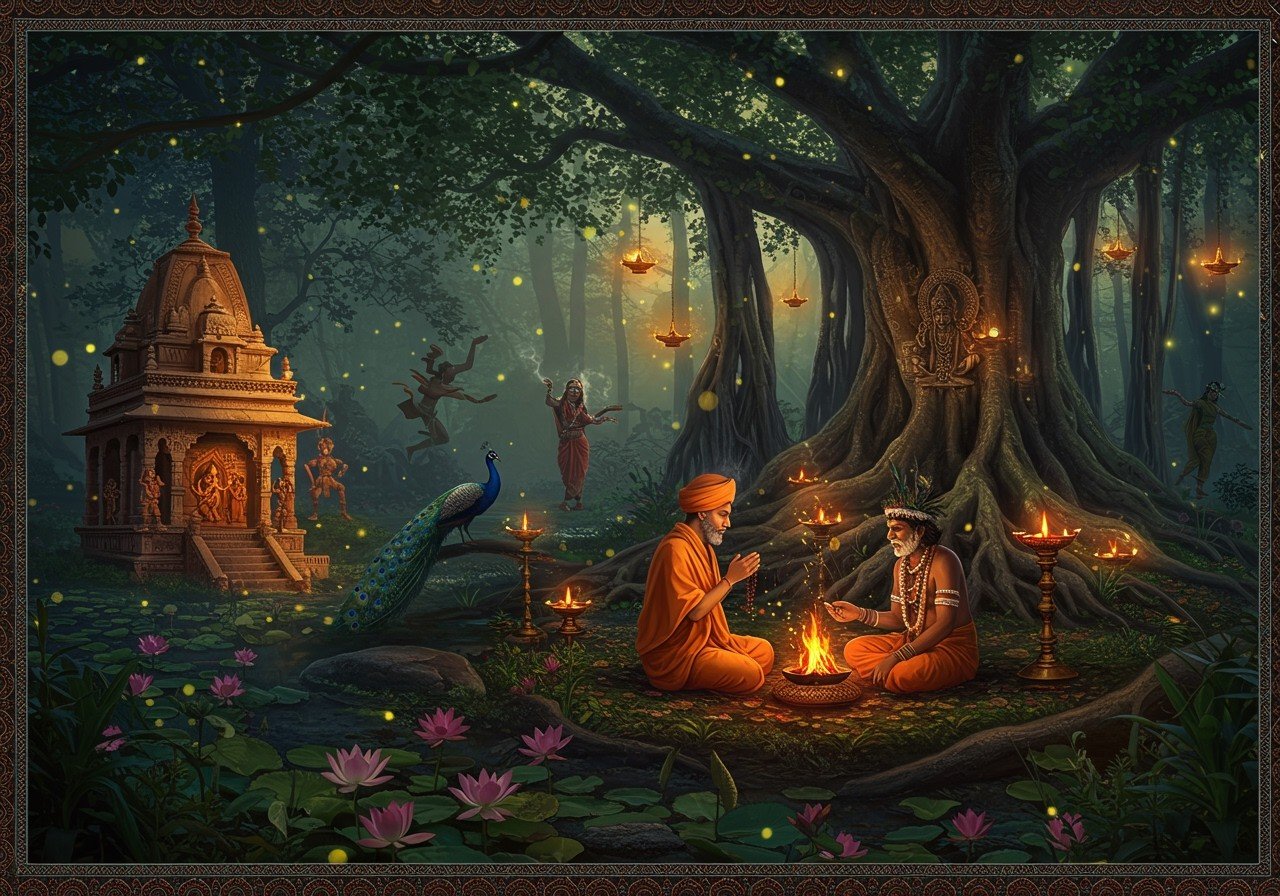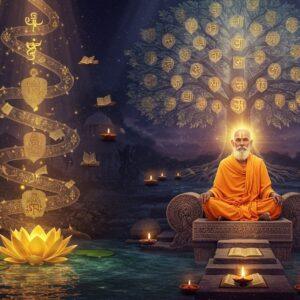
The rich tapestry of Indian culture beautifully interlaces Hinduism and tribal traditions. This centuries-long intersection creates a vibrant mosaic of beliefs and practices cherished by many culturally rooted Indians. Understanding this blend is crucial for those who value tradition and seek authentic ritual items online. At poojn.in, we understand the significance of these traditions and offer a wide selection of products to support your spiritual practices.
Shared Spiritual Ground: Deities, Nature, and Beliefs
Across India, Hindu and tribal communities often venerate shared deities. Nature spirits and mother goddesses are revered in both traditions, highlighting a deep connection to the natural world. Tribal religions often emphasize animism, the belief that natural elements possess a spiritual essence—a concept resonating with Hindu reverence for the divine in nature. The vibrant festival of Navaratri exemplifies this shared reverence, celebrating goddesses honored in both traditions. Further connecting these spiritual paths are beliefs in reincarnation and karma, fundamental to Hinduism and present in various forms within some tribal worldviews.
For those seeking to connect with these shared spiritual roots, poojn.in offers a curated selection of Bel malas and other sacred items traditionally used in both Hindu and tribal practices. Our collection aims to support your spiritual journey with authentic and respectfully sourced products.
A History of Cultural Exchange and Mutual Influence
India’s historical narrative is replete with instances of cultural exchange. Hinduism and tribal traditions have long engaged in a reciprocal dance, borrowing and adapting each other’s practices. The grand festival of Dussehra, for example, has deep roots in tribal celebrations. This dynamic interplay has shaped a vibrant and diverse cultural landscape.
Languages like Sanskrit and Pali have played a pivotal role in this exchange, facilitating the transmission of stories and traditions across communities. Hindu epics like the Ramayana (Read more about the Ramayana) and Mahabharata have profoundly influenced tribal narratives, weaving Hindu themes into the rich tapestry of tribal storytelling. Explore our collection of sacred texts at poojn.in to delve deeper into these influential scriptures.
Tribal art forms also showcase this beautiful fusion. Warli and Gond paintings, renowned for their intricate designs, often depict Hindu gods and motifs. This artistic confluence underscores the shared cultural journey of these communities. At poojn.in, you can find a variety of sacred art and idols reflecting these interwoven traditions.
Hinduism’s Influence on Tribal Practices
Hinduism’s influence has touched various aspects of tribal life. Some tribal communities have adopted elements of the caste system, while others have incorporated Hindu rituals like pujas and yajnas into their ceremonies, creating spaces for spiritual connection and community bonding. Hindu pilgrimage sites located in tribal regions serve as points of convergence, fostering cultural exchange and shared spiritual experiences.
Poojn.in provides a comprehensive range of incense and puja items suitable for both Hindu and tribal rituals. We are committed to offering high-quality products that honor these traditions.
Navigating Modern Challenges and Preserving Heritage
In contemporary India, both Hinduism and tribal traditions face the pressures of globalization and modernization, which can threaten the preservation of unique cultural practices. However, government initiatives and NGO efforts are working to safeguard these precious heritages, striving to maintain the vibrancy of these religious and cultural expressions.
Digital platforms, like poojn.in, offer valuable opportunities for sharing traditional knowledge and connecting urban Indians with their cultural roots, fostering a deeper appreciation for tribal traditions. Explore our collection of resources on Hindu Gods and Goddesses and Hindu Temples to expand your understanding of these rich traditions.
Recognizing the Value of Shared Traditions
Recognizing the contributions of tribal traditions enriches the broader cultural tapestry of India, fostering harmony and mutual respect among diverse communities. By valuing these traditions, we ensure their continuity for generations to come. Embracing this shared heritage connects us to our roots and strengthens our collective identity.
Understanding the Nuances: Hinduism and Tribal Religions
While Hinduism is often viewed as a unified religion, it’s crucial to acknowledge the distinct categories of “folk religions and tribal religions” within its broader framework. This relationship is complex and has various interpretations. Some view tribal religions as separate from Hinduism, while others see them as integral threads within the larger Hindu tradition.
- Nature-Based Spirituality: Both Hinduism and tribal religions often share a deep connection with nature, worshipping natural elements like earth, fire, water, and air. Many tribal religions revere spirits associated with natural features, reflecting a close relationship with the environment. This reverence for nature mirrors Hindu beliefs in the divine presence within the natural world.
- Deities: Hinduism embraces a multitude of divine beings, often seen as manifestations of a single supreme reality. Similarly, tribal religions incorporate local deities and spirits. This shared characteristic demonstrates the diversity of spiritual expression within both traditions. Over time, some tribal deities, myths, and rituals have been incorporated into Hinduism, further illustrating the complex relationship between the two.
- Rituals: Both Hinduism and tribal religions emphasize rituals, including worship (puja), sacrificial rites (yajna), meditation (dhyana), and yoga. These rituals often involve dance, music, and offerings, creating vibrant expressions of faith and community. The shared importance of ritual highlights the significance of embodied practice in both traditions.
- Assimilation and Coexistence: Hinduism’s interaction with tribal cultures has been marked by accommodation, assimilation, and coexistence. Many regional, local, and tribal cults have been assimilated into Hinduism. This process reflects the dynamic and evolving nature of religious traditions in India.
- Inclusivity: Hinduism is known for its inclusivity, embracing a wide range of indigenous traditions. This openness to varied beliefs and practices has led to the identification of many tribal communities as Hindu, further blurring the lines between the two categories.
- Ancestor Worship: Similar to broader Indian religious practices, tribal religions often incorporate traditions of ancestor worship. This shared reverence for ancestors reflects a deep connection to lineage and heritage.
Exploring these commonalities and differences offers a deeper understanding of the complex relationship between Hinduism and tribal traditions. It encourages a nuanced perspective on the diverse spiritual landscape of India.


